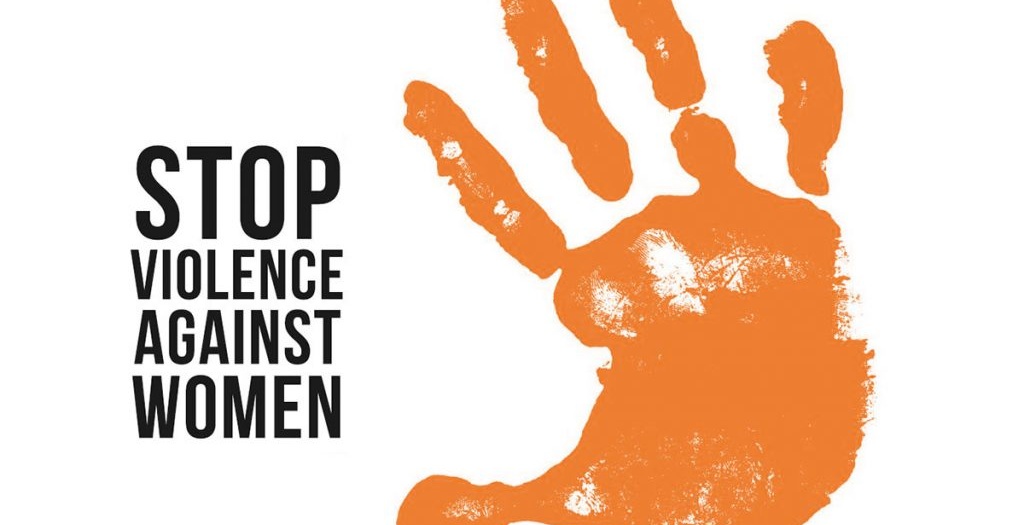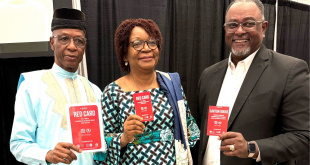Various forms of violence
- It is estimated that 35 per cent of women worldwide have experienced either physical and/or sexual intimate partner violence or sexual violence by a non-partner (not including sexual harassment) at some point in their lives. However, some national studies show that up to 70 per cent of women have experienced physical and/or sexual violence from an intimate partner in their lifetime. Evidence shows that women who have experienced physical or sexual intimate partner violence report higher rates of depression, having an abortion and acquiring HIV, compared to women who have not [1].
- Similar to data from other regions, in all four countries of a multi-country study from the Middle East and North Africa, men who witnessed their fathers using violence against their mothers, and men who experienced some form of violence at home as children, were significantly more likely to report perpetrating intimate partner violence in their adult relationships. For example, in Lebanon the likelihood of perpetrating physical violence was more than three times higher among men who had witnessed their fathers beating their mothers during childhood than those who did not [2].
- It is estimated that of the 87,000 women who were intentionally killed in 2017 globally, more than half (50,000- 58 per cent) were killed by intimate partners or family members, meaning that 137 women across the world are killed by a member of their own family every day. More than a third (30,000) of the women intentionally killed in 2017 were killed by their current or former intimate partner [3].
- Adult women account for nearly half (49 per cent) of all human trafficking victims detected globally. Women and girls together account for 72 per cent, with girls representing more than three out of every four child trafficking victims. More than four out of every five trafficked women and nearly three out of every four trafficked girls are trafficked for the purpose of sexual exploitation [4].
- It is estimated that there are 650 million women and girls in the world today who were married before age 18. During the past decade, the global rate of child marriage has declined. South Asia had the largest decline during this time, from 49 per cent to 30 per cent. Still, 12 million girls under 18 are married each year and in sub-Saharan Africa—where this harmful practice is most common—almost four out of 10 young women were married before their 18th birthday. Child marriage often results in early pregnancy and social isolation, interrupts schooling, limits the girl’s opportunities and increases her risk of experiencing domestic violence [5].
- At least 200 million women and girls aged 15-49 have undergone female genital mutilation in the 30 countries with representative data on prevalence. In most of these countries, the majority of girls were cut before age five. More than 20 million women and girls in just seven countries (Egypt, Sudan, Guinea, Djibouti, Kenya, Yemen and Nigeria) have undergone female genital mutilation by a health care provider.With population movement, female genital mutilation is becoming a practice with global dimensions, in particular among migrant and refugee women and girls [6].
- Approximately 15 million adolescent girls (aged 15 to 19) worldwide have experienced forced sex (forced sexual intercourse or other sexual acts) at some point in their life. In the vast majority of countries, adolescent girls are most at risk of forced sex by a current/former husband, partner or boyfriend. Based on data from 30 countries, only one per cent ever sought professional help [7].
- Globally, one out of three students (aged 11 and 13 to 15 years) have been bullied by their peers at school at least on one day in the past month, with girls and boys equally likely to experience bullying. However, boys are more likely to experience physical bullying than girls, and girls are more likely to experience psychological bullying, particularly being ignored or left out or subject to nasty rumours. Girls also report being made fun of because of how their face or body looks more frequently than boys. School-related gender-based violence is a major obstacle to universal schooling and the right to education for girls [8].
- Twenty-three per cent of female undergraduate university students reported having experienced sexual assault or sexual misconduct in a survey across 27 universities in the United States in 2015. Rates of reporting to campus officials, law enforcement or others ranged from five to 28 per cent, depending on the specific type of behavior [9].
- One in 10 women in the European Union report having experienced cyber-harassment since the age of 15 (including having received unwanted, offensive sexually explicit emails or SMS messages, or offensive, inappropriate advances on social networking sites). The risk is highest among young women between 18 and 29 years of age [10].
- In a multi-country study from the Middle East and North Africa, between 40 and 60 per cent of women said they had ever experienced street-based sexual harassment (mainly sexual comments, stalking/following, or staring/ogling), and 31 per cent to 64 per cent of men said they had ever carried out such acts. Younger men, men with more education, and men who experienced violence as children were more likely to engage in street sexual harassment [11].
- Results from a national Australian survey show that almost two out of five women (39 per cent) aged 15 and older who have been in the workforce in the last five years have experienced sexual harassment in the workplace during that period, compared to one out of four (26 per cent) of their male counterparts. Regarding most common perpetrators, in almost four out of five cases (79 per cent) one or more of the perpetrators were male [12].
- Eighty-two per cent of women parliamentarians who participated in a study conducted by the Inter-parliamentary Union in 39 countries across five regions reported having experienced some form of psychological violence (remarks, gestures and images of a sexist or humiliating sexual nature made against them or threats and/or mobbing) while serving their terms. They cited social media as the main channel through which such psychological violence is perpetrated; nearly half of those surveyed (44 per cent) reported having received death, rape, assault or abduction threats towards them or their families. Sixty-five per cent had been subjected to sexist remarks, primarily by male colleagues in parliament and from opposing parties as well as their own [13].
Measures to address violence
- In the majority of countries with available data, less than 40 per cent of the women who experience violence seek help of any sort. Among women who do, most look to family and friends and very few look to formal institutions and mechanisms, such as police and health services. Less than 10 per cent of those women seeking help for experience of violence sought help by appealing to the police [14].
- At least 144 countries have passed laws on domestic violence, and 154 have laws on sexual harassment. However, even when laws exist, this does not mean they are always compliant with international standards and recommendations or implemented [15].
- Availability of data on violence against women has increased significantly in recent years. Comparable national prevalence data on intimate partner violence for the period 2005-2017 are available for 106 countries [16].
Leaving no one behind
- The first large-scale research study of violence against women and girls in several areas of South Sudan that have known war and conflict for many years, showed that 33 per cent experienced sexual violence (including rape, attempted rape or any other unwanted sexual acts) by a non-partner (can include police officers or other armed actors, strangers or known persons). Seventy per cent or more of non-partner sexual assaults occurred during a direct experience of conflict (e.g. displacement, abduction or an attack on a survivor’s village). Women who had directly experienced a conflict event (attack, injury, etc.) reported increased brutality and frequency [17].
- In 2014, 23 per cent of non-heterosexual women (those who identified their sexual orientation as lesbian, bisexual or other) interviewed in the European Union indicated having experienced physical and/or sexual violence by both male and female non-partner perpetrators, compared with five per cent of heterosexual women [18].
- In a national university student survey in Australia, 72 per cent of trans and gender diverse students (self-identifying their gender as ‘indeterminate or unspecified’, ‘transgender’, or ‘other’) reported having been sexually harassed at least once during 2016, in contrast to 63 per cent of female students, and 35 per cent of male students [19].
- Data from female participants of prevention interventions in six low- and middle-income countries in Asia and Africa show that women with disabilities are two to four times more likely to experience partner violence than those without disabilities. Furthermore, the risk of experiencing all forms of partner violence and non-partner sexual violence increases with the severity of impairment. Qualitative data shows that disability-related stigma and discrimination, compounds women’s vulnerability to violence and hinders their ability to seek help [20].
- In a survey of 3,706 primary schoolchildren from Uganda, 24 per cent of 11 to 14-year-old girls with disabilities reported sexual violence at school, compared to 12 per cent of non-disabled girls [21].
- In the 2017 National Youth Risk Behaviour survey in the US, nearly more than 9 per cent of high school girls who dated or went out with someone during the 12 months preceding the survey reported being physically hurt on purpose by someone they were dating or going out with during that period compared to nearly 7 per cent of high school boys; and almost 11 per cent reported having been forced to do sexual things they did not want to by someone they were dating or going out with compared to almost 3 per cent of high school boys [22].
- In Australia, the prevalence of workplace sexual harassment in the past five years was substantially higher among people who identified as Aboriginal and Torres Strait Islander (53 per cent) compared with those who did not (32 per cent). There were no significant gender differences with 50 per cent of Aboriginal and Torres Strait Islander men and 55 per cent of Aboriginal and Torres Strait Islander women having experienced it in the last five years [23].
Sign your red card: www.redcardpledge.com
Source:UNWOMEN.ORG
 African Renaissance and Diaspora Network
African Renaissance and Diaspora Network

